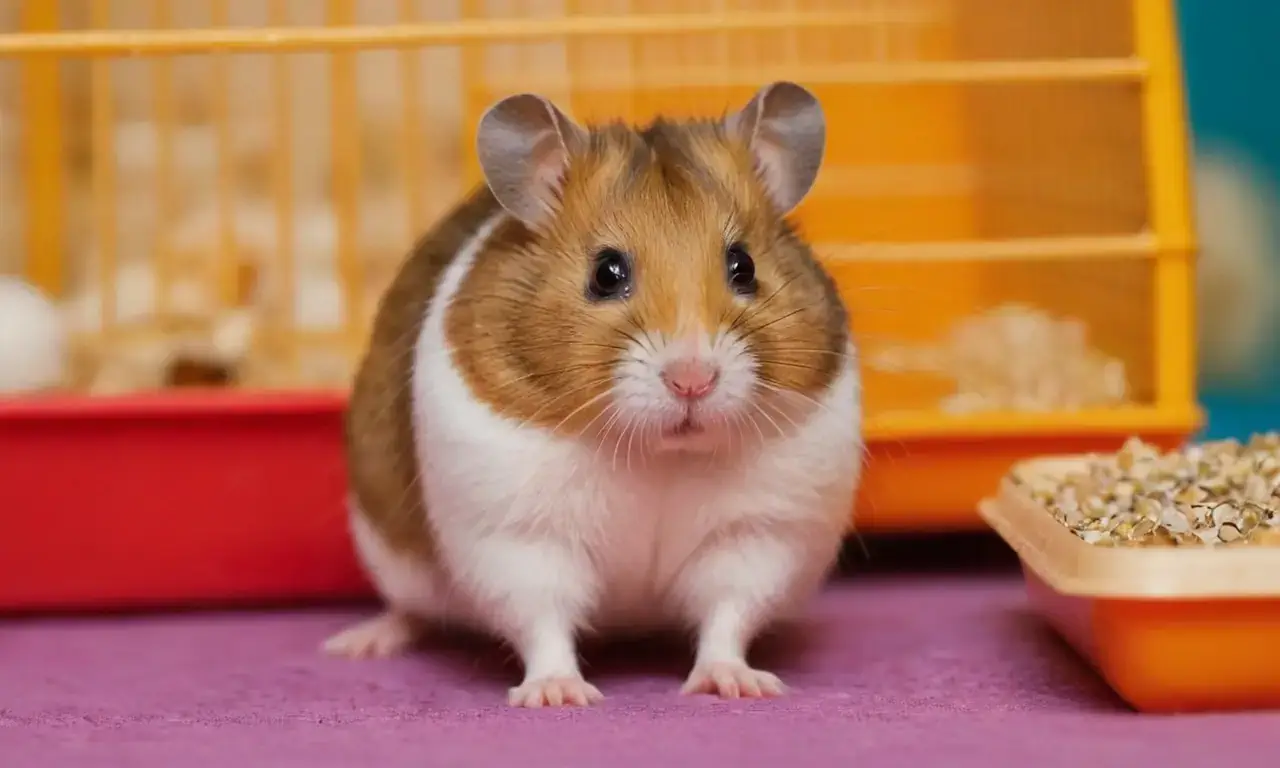
Hamsters: Taming Their Bitey Nature

Hamsters have long been a popular choice as pets, known for their cute appearance and endearing personalities. However, one aspect that often deters potential owners is their reputation for being bitey. This fear response stems from the fact that hamsters are prey animals in the wild, naturally inclined to defend themselves when threatened or startled. As a result, many people wonder if it's possible to tame this bitey nature and enjoy a harmonious relationship with these tiny creatures.
The objective of this article is to delve into the world of hamster behavior, exploring why they might bite, how to handle them safely, and provide practical tips on creating a trusting environment. By understanding the underlying reasons behind their biting behavior and implementing effective handling techniques, you can not only prevent bites but also foster a deeper connection with your pet.
- Understanding Hamsters' Bitey Nature
- Why Do Hamsters Bite?
- Tips for Handling Hamsters Safely
- Creating a Trusting Environment
- How to Pick Up Your Hamster Without Getting Bitten
- Importance of Gentle Handling
- Precautions Before Handling Your Hamster
- Common Mistakes That Lead to Biting Incidents
- Training Your Hamster to Be Less Bitey
- Conclusion
Understanding Hamsters' Bitey Nature
Hamsters are small, nocturnal rodents that have evolved to live in underground burrows. Their natural instincts as prey animals dictate that they should be wary of predators, which includes humans. This innate fear response is what leads them to bite when they feel threatened or scared. It's essential to recognize and respect this aspect of their behavior rather than trying to suppress it.
Hamsters are also highly territorial creatures, and their cage can become a sanctuary where they feel safe from potential threats. When you enter their space, whether it's to clean the cage or simply observe them, your hamster may perceive this as an invasion of its territory. This perception can trigger a defensive response, leading to bitey behavior.
Understanding that hamsters are not inherently aggressive but rather reacting to their environment is crucial for building trust and preventing biting incidents. By acknowledging these instincts, you can develop strategies to mitigate the likelihood of bites and create a more harmonious relationship with your pet.
Why Do Hamsters Bite?
There are several reasons why hamsters might bite. One primary reason is fear or stress caused by handling, loud noises, or sudden movements. When hamsters feel threatened, their natural response is to defend themselves through biting. This behavior can be exacerbated if they're not properly socialized from an early age.
Another factor contributing to biting incidents is the hamster's territorial nature. If you enter its cage without proper care and attention, your hamster may view this as a threat to its space and react accordingly. Additionally, hamsters are naturally inclined to nibble on objects in their environment, which can sometimes be misinterpreted as aggression.
It's also worth noting that some hamsters might bite due to medical issues or discomfort. For instance, if your hamster is experiencing dental problems or has a skin irritation, it may become irritable and more likely to bite. Regular veterinary check-ups are essential to ensure your pet's health and well-being, which in turn can reduce the likelihood of biting incidents.
Tips for Handling Hamsters Safely
To minimize the risk of bites when handling hamsters, it's crucial to approach them with care and patience. One of the most effective tips is to let your hamster get used to you before attempting to pick it up. This means spending time near their cage, talking softly, and allowing them to become familiar with your presence.
When you do decide to handle your hamster, make sure to lift it from the sides of its cage rather than scooping it up by the middle. This reduces the likelihood of startling or stressing out your pet. It's also essential to create a den-like environment in your hands by cupping them gently around the hamster. This can help your pet feel more secure and less likely to bite.
Another crucial aspect is hand hygiene. Before handling your hamster, wash your hands thoroughly with soap and water to avoid any accidental nibbling due to lingering scents or oils on your skin. It's also a good idea to wear gloves if you're unsure about the cleanliness of your hands.
Creating a Trusting Environment

Building trust between you and your hamster is key in preventing biting incidents. One effective way to do this is by creating a safe space for your pet where it feels secure and comfortable. This can be achieved by providing a large enough cage with plenty of hiding places, toys, and climbing structures.
It's also essential to establish a routine that includes regular interaction with your hamster. Spend time observing them, talking softly, and offering treats in their presence. Gradually increase the amount of handling over time, always being mindful of your pet's comfort level.
Another aspect of creating a trusting environment is ensuring that your hamster has access to its favorite foods and hiding places at all times. This can help reduce stress and anxiety, making it less likely for them to bite when handled. By providing a stable and predictable routine, you can foster a deeper connection with your pet.
How to Pick Up Your Hamster Without Getting Bitten
When picking up your hamster, it's essential to do so gently and carefully. Start by placing one hand under the hamster's body and the other above its head, supporting its back. This will help prevent any sudden movements that might startle your pet.
As you lift your hamster, make sure to move slowly and smoothly, avoiding any jerky motions that could cause stress. If your hamster starts to bite, release it immediately and give it space to calm down before attempting to handle it again.
Another tip is to support the hamster's body rather than holding it by its tail or legs. This can help reduce the likelihood of biting, as hamsters are more likely to defend themselves when their limbs are restricted.
Importance of Gentle Handling
Gentle handling is crucial in preventing bites and building trust with your hamster. When you handle your pet roughly or abruptly, it can cause significant stress and anxiety, leading to bitey behavior. Instead, focus on moving slowly and deliberately, allowing your hamster to become accustomed to your touch.
It's also essential to be mindful of your body language when interacting with your hamster. Avoid sudden movements or loud noises that might startle them. By being gentle and calm, you can create a safe environment where your pet feels comfortable and secure.
Precautions Before Handling Your Hamster
Before handling your hamster, it's essential to take certain precautions to ensure both your safety and the well-being of your pet. First, make sure that your hands are clean and free from any strong scents or oils that might cause irritation.
It's also crucial to check for any signs of illness or discomfort in your hamster before handling them. If you notice any unusual behavior, such as lethargy, loss of appetite, or changes in stool quality, it's best to consult a veterinarian before attempting to handle your pet.
Additionally, ensure that the room is quiet and free from distractions when handling your hamster. A calm environment can help reduce stress and anxiety, making it less likely for your pet to bite.
Common Mistakes That Lead to Biting Incidents
There are several common mistakes that can lead to biting incidents with hamsters. One of the most significant errors is rushing into handling without allowing your pet time to become familiar with you. This can cause unnecessary stress and anxiety, leading to bitey behavior.
Another mistake is not providing a safe space for your hamster to retreat to when feeling overwhelmed or threatened. Failing to offer hiding places or toys can exacerbate the situation, making it more likely for your pet to bite.
It's also essential to avoid sudden movements or loud noises while handling your hamster. These actions can startle your pet and trigger a defensive response, leading to biting incidents.
Training Your Hamster to Be Less Bitey
Training your hamster to be less bitey requires patience, consistency, and positive reinforcement. One effective method is to reward your pet for calm behavior when handled. Offer treats or praise when they remain still or show no aggression during handling.
It's also essential to establish a routine that includes regular interaction with your hamster, gradually increasing the amount of handling over time. This can help your pet become more comfortable and secure in your presence.
Another aspect of training is recognizing signs of stress or anxiety in your hamster. If you notice any unusual behavior, such as rapid breathing, tail flicking, or avoidance, it's best to give your pet space before attempting to handle them again.
Conclusion
Preventing bites from hamsters requires a combination of patience, understanding, and careful handling. By letting your hamster get used to you, creating a safe environment, and being gentle when handling, you can reduce the likelihood of biting incidents. Remembering to take precautions before handling your pet and recognizing common mistakes that lead to biting can also help in building trust with your hamster.
Ultimately, fostering a strong bond between you and your hamster is key in preventing bites. By providing a stable routine, offering hiding places, and rewarding calm behavior, you can create a safe space for both yourself and your pet to thrive.
Leave a Reply

Related Links